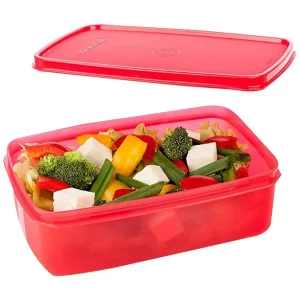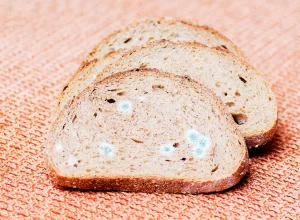There are proper and improper methods for food storage. For instance, although certain vegetables must be kept chilled, others must be stored at room temperature. Certain cooking oils may be left out on the counter, while others need to be kept in the refrigerator. You can be using the wrong containers, and even some of your items that say they are outdated aren’t truly expired. You don’t want to let anything go to waste, especially because food storage is limited.
We’ve done the research to determine the best methods to store your food to ensure that it tastes great and keeps for the longest possible time. The solutions to 10 typical kitchen storage errors are provided here.
You may be surprised to learn that there isn’t a national law defining what expiration dates truly represent. Expiration dates frequently represent quality control rather than nutritional value or safety. How can you tell if the food you’re eating is healthy? Check out the USDA recommendations, then trust your instinct, your sight, and your nose.
Read More: Amazing 3 Hair Dryer Brushes For You, Read Full News To Know More.

You’re discarding your food that has “expired”
Smell: If something smells good and was stored well, it probably is safe to consume.
Sight: When it comes to fresh foods like vegetables, don’t allow your sight deceive you. Nothing is damaged by a few bumps or bruises.
Avoid canning the cans: Food in cans has a long shelf life. Even a can that’s started to rust should still be alright, as long as it isn’t bulging and the seal is intact.
Examine the package, utilise your senses, prepare food properly, and don’t allow the perfect become the enemy of the good. Understanding “expiration” dates correctly might help you avoid throwing away food and money at the same time.
Bee’s Wrap could be the solution if you’re tired of tossing away throwaway food wrap but still want to keep food fresh. Beeswax and cotton were used to create this reusable food wrap.
It’s made to be unwrapped and used as a placemat after you make a sandwich on top of it in your kitchen. Bee’s Wrap is excellent for storing food as well. Creator Sarah Kaeck, a devoted home baker, said that it will help keep bread moist and crispy. It’s also fantastic for covering jars and bowls (squeeze some Bee’s Wrap onto the top of a container and the warmth of your fingers will soften the wax just enough to make a seal). Other great uses include wrapping cheese, half of an avocado, half of a lemon, and covering jars and bowls.
Then, just wash it with cold water (soap is good, but warm water dissolves the wax), hang-dry, and use it again. If you use it a few times a week, it should last for approximately a year.

You shouldn’t be cooling these items, yet you are.
Onions, potatoes, garlic, avocado, tomatoes, bananas, stone fruit, bread, pastries, melons, spices, honey, peanut butter, apples, coffee, eggs, butter, condiments, dressings, soy sauce, and hot sauce shouldn’t ever (or should only be done sparingly), while refrigeration actively worsens the flavour of some foods. Surprised?
You’re storing your food in the improper containers.
We put to the test the most popular glass and plastic food storage containers on the market to see which one was the best. We packed them back together, dumped them onto a linoleum floor, microwaved them, discoloured them, pried them apart, and many other things.
The best glass container is Pyrex’s Ultimate 10-Piece Glass Storage Set, which is made entirely of glass and has glass lids with white silicone trim. Both food and glass won’t spill or break. Although the silicone on the lid will discolour, a spin through the dishwasher will make it spotless. It has a vent for microwave reheats and may be used in a prepared oven as long as the food is defrosted.
Best plastic container: Easy Find by Rubbermaid Lids containers won’t spring a leak until you shake them forcefully, and drops aren’t a concern unless the container happens to land on its side or a corner. While the set is dishwasher- and microwave-safe and comes with a lifetime warranty, no plastic container is oven-safe. This set shouldn’t be frozen since expanding food might cause the top to pop off.

You lack knowledge regarding cooking oil storage
Different cooking oils made from fruits, vegetables, nuts, and seeds require varying amounts of storage. Oil will oxidise when exposed to air, light, or heat, finally going rancid. Certain cooking oils may be kept at room temperature, but others perform better when kept in the refrigerator.
Corn and canola oils: They keep well in a cool, dark cupboard, or you may put them in the refrigerator if it takes you longer than a year to finish a bottle.
Olive oil: Storing olive oil on or next to a stove will definitely cause it to soon go rancid. This is especially true if the container is exposed to direct sunlight. Put it in the coldest, darkest spot in your home or use a smaller glass container in the kitchen.
If kept firmly closed, away from heat and light, peanut oil can last up to two years. The shelf life of peanut oil may be increased yet more by refrigeration. Coconut oil is quite stable and has a two-year or longer shelf life when stored at room temperature. Delicate oils that are especially vulnerable to rancidity include avocado, grapeseed, hazelnut, sesame, truffle, walnut, safflower, and sunflower. This is especially true if they are exposed to excessive light or heat. After opening, refrigeration is advised. These oils can last up to six months when kept cool.
Read More: 5 Best Samsung Phones of 2023: Unveiling the Latest Galaxy Models







